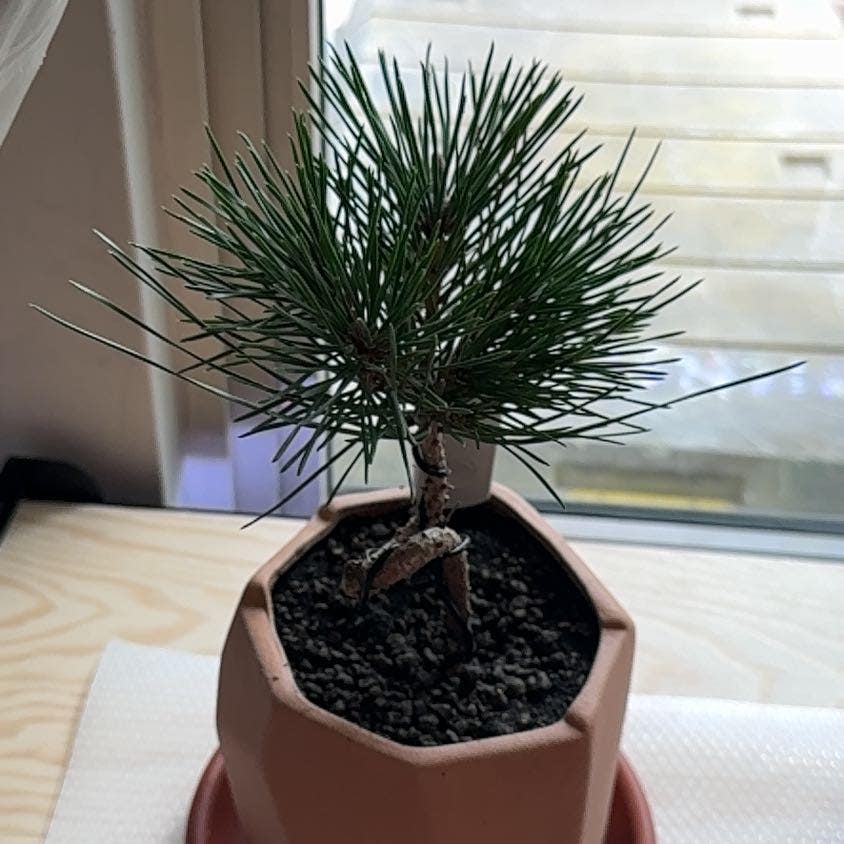Why Are My Japanese Black Pine Leaves Curling?
Feb 06, 2024•4 min read
Unravel the mystery behind your Japanese Black Pine's leaf curl and restore its splendor! 🌲🔍
- 🌡️ Environmental stressors like temperature and water cause leaf curl.
- 🐜 Pests and diseases like scale and pine wilt lead to curling.
- 🌱 Balance elements, manage pests, and check soil to prevent curling.
Spotting the Culprits: Causes of Leaf Curling
🌞 Environmental Stressors
When your Japanese Black Pine starts resembling a batch of overcooked fries, heat stress might be the culprit. Direct sunlight can be a bit of an overbearing friend to your pine, causing leaves to curl up as if seeking shelter. On the flip side, if your pine's leaves are curling downwards, it could be a sign of chilly weather or overwatering. And let's not forget about humidity—too low, and your pine's leaves will curl tighter than a miser's fist around a penny.
🐜 Pests and Diseases
Pine needle scale and pine wilt are like those annoying relatives who show up unannounced and overstay their welcome. Scale insects latch on like they're claiming territory, while pine wilt—caused by nematodes—acts like a microscopic vampire, sucking the life out of your pine. Regular inspections are key; catch these pests early, and you'll save your pine from turning into a botanical horror show.
🍽️ Nutrient Shortfalls
Yellowing needles? Your pine might be screaming for iron or manganese. These deficiencies are the plant equivalent of running a marathon on an empty stomach—your pine needs its nutrients to stay perky. If the older needles are turning yellow while the young ones remain green, it's a classic sign of iron deficiency. Manganese shortage, on the other hand, will have the newest needles looking pale and sickly.

Turning Over a New Leaf: Fixing the Curl
🌿 Balancing the Elements
Adjusting water, light, and temperature is crucial for uncurling Japanese Black Pine leaves. Ensure the tree is not drowning in excess moisture or parched from lack of water. Strike a balance; think of it as the tree's hydration sweet spot.
Light exposure should be just right—not too much to scorch the leaves, nor too little to leave them craving sunshine. And when it comes to temperature, avoid extremes. Your pine's not a fan of sauna-like heat or frosty chills.
🐜 Kicking Out Pests and Battling Diseases
Pests like the pine needle scale and diseases such as pine wilt need to be shown the door—fast. Use insecticidal soap or neem oil with the precision of a sniper to target these freeloaders. For diseases, fungicides may be your best bet, but always follow the label instructions to the letter.
Integrated Pest Management (IPM) is your strategic ally here. Combine cultural, biological, and chemical controls to manage pests and diseases with minimal environmental impact.
🌱 Feeding Your Pine Right
Nutrient deficiencies can lead to leaf curling, so it's time to feed your pine properly. Conduct a soil test to check for pH balance and nutrient levels. If the soil's too acidic or alkaline, it's like serving the wrong meal to your tree.
Use soil amendments and fertilizers to correct any deficiencies. Start with a balanced diet of nutrients in the spring, and monitor the tree's response. Remember, overfeeding is just as bad as starving—aim for nutrient balance.
Keeping Your Pine Pristine: Prevention Strategies
🏰 Building a Strong Defense
Routine checks are your first line of defense. Like a security guard making the rounds, inspect your Japanese Black Pine regularly for signs of stress. Environmental stability is key; abrupt changes are your pine's worst enemy. Ensure consistent watering and protect the tree from extreme temperatures to prevent stress that can lead to leaf curling.
🐜 Pest and Disease Vigilance
Integrated Pest Management (IPM) isn't just a fancy term; it's a lifestyle for your pine. Combine biological controls, like introducing predator insects, with cultural practices such as proper pruning to keep pests guessing. Cleanliness is non-negotiable; remove fallen needles and debris to deny bugs a home base. If chemicals are necessary, choose the least toxic options to maintain an eco-friendly garden.
🌱 Nutrient Watch
Think of soil checks as your pine's annual physical—essential to catch issues before they become problems. Use organic amendments to boost soil health; it's like a multivitamin for your tree. When it comes to fertilization, less is often more. Overfeeding can be just as harmful as neglect, so tailor your approach to your pine's specific needs.


